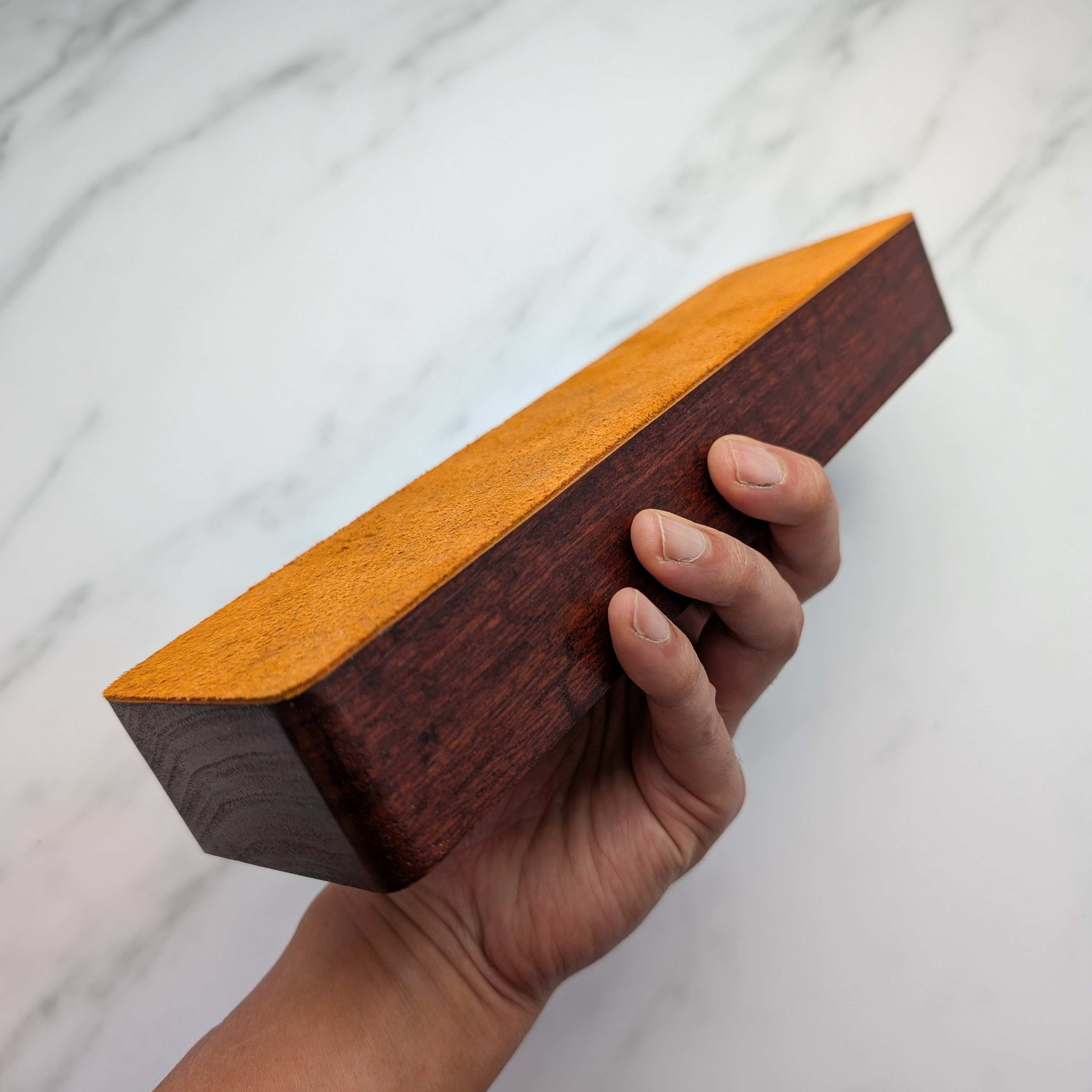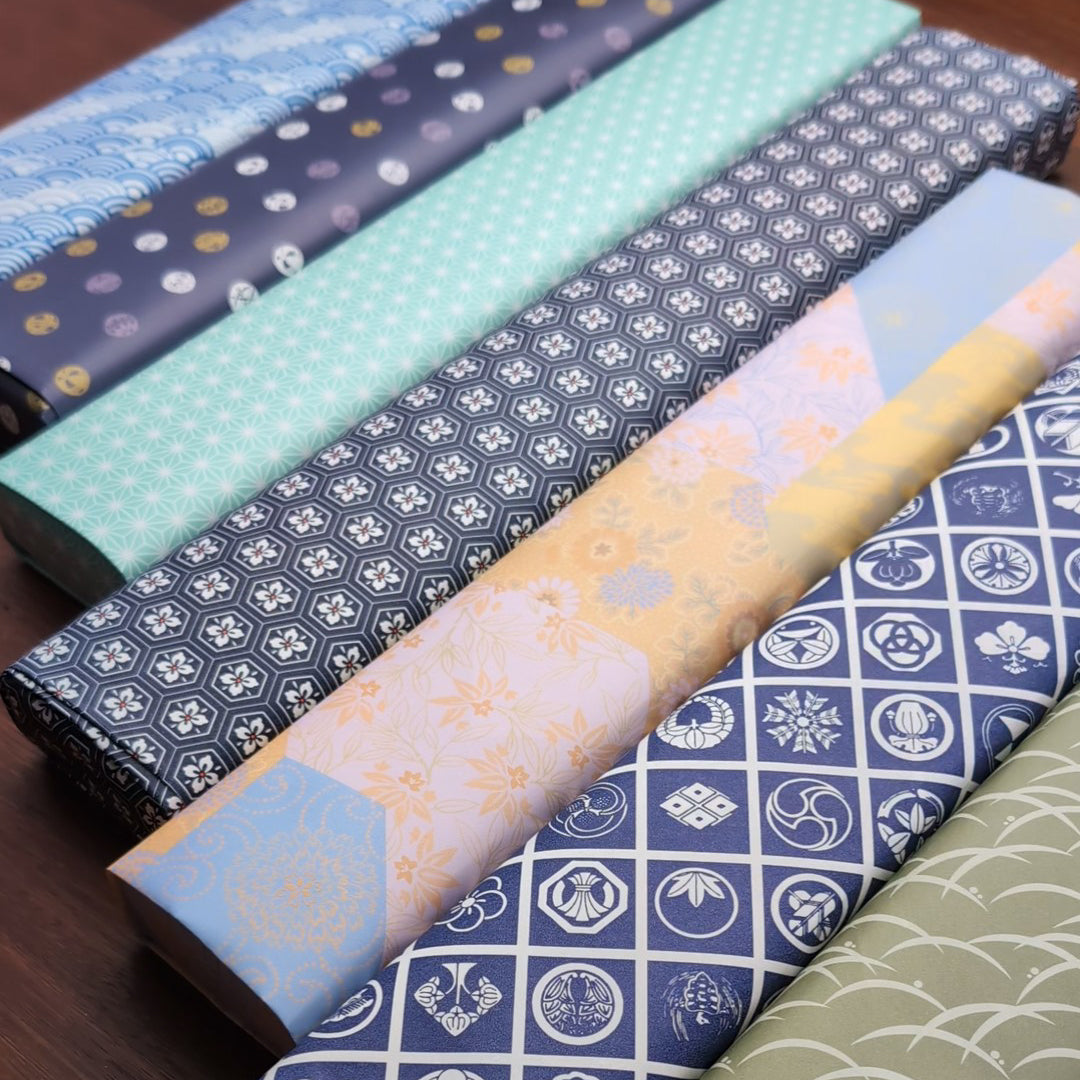





Benchtop Leather Strop - Suede Side
Purchasing as a gift?
A strop is an essential item in sharpening and edge maintenance to keep the sharp edge long without sharpening, remove any remaining burrs after sharpening, and refine the edge to a blazing sharp condition.
Many of the benchtop strops on the market must be held with one hand to prevent them from moving and are not tall enough for knuckle clearance when used on a bench. We decided to make our strops, which we would love to use.
Key Features
- Good heftiness (Base made of Jarrah, hard timber) 0.6 kg
- Good grips (round rubber feet for small contact area)
- Similar size to regular whetstones (278 x 72 mm)
- Good knuckle clearance from the bench (45mm tall)
Pre-loaded with compound or Plain
General Recommendation:
Choose Pre-Loaded with Compound if you are a beginner who is not sure which one to get or anyone who would like the green compound preloaded on the strop. The green compound is made of chromium oxides that are often used for polishing metals and jewelry. They are available in the form of a waxy bar and are colour-coded as green. The grit number is often not disclosed by manufacturers but is usually about #8000 which is very fine. Unless you are a heavy user, you don't need to re-apply the compound for a very long time. We use this strop with the green compound applied in the majority of our works as well as in our classes.
Choose Plain if you are an intermediate to advanced user who wishes to apply your desired abrasive compound or finish the edge without further polishing after sharpening on a stone.
Specification
- Maker: Hazuki Knife
- Hide: Kangaroo, Suede Side
- Timber Base: Jarrah
- Abrasives: Chromium Oxide (loaded option)
- Feet: Round rubber
- Size: 278 x 72 x 45 mm
- Weight: 0.6 kg
Care and Use
Use
- Read How To Strop in the page below.
Cleaning
- wipe using a clean and dry paper towel or fabric.
Storing
- Store in dry environment.
- Lay on its side to prevent dust from covering the top.
Choose options






What is a Strop?
It is almost an essential item in sharpening and edge maintenance. A similar form to stropping would be honing rods that are often seen and used in the western society. The honing steel/ceramic/diamond rods can fall under the broad category of strops because they perform similar functions and don't remove much of steel. Really great things about the rods are portability, convenience, and water resistance, but generally strops create superior cutting edge to the rods.
It has three major functions:
- Touching up a mildly to moderately worn edge between sharpenings, so it keeps your blade sharp longer without sharpening.
- Removing any remaining burrs that you could not remove during sharpening on a stone, and
- Refining the sharp edge. It is a sharpness booster.
See below for more information.
Use it once a day or week if you are a heavy user. Or use it when it just started to struggle through the skin of a tomato or ingredients with tough skin around. That will keep your blade sharp longer without sharpening.
it doesn't remove enough steel to form a new edge efficiently, so you can't make a dull knife sharp with a strop, but it temporarily restores the edge by re-aligning the apex and removing microscopic loose steel.
Sharpen the edge and remove or minimise the primary burrs on stones and then use a strop to remove any micro burrs.
It takes sharp edge to the next level by creating finer microscopic teeth and keener apex.
How to Strop
The following elements are some of the key information, especially for beginners.
Drag the edge on the strop applying light pressure. Never lead with the edge as it cuts into the leather.
Make strokes like spreading butter. Apply light pressure. You may work in sections or all in one stroke from tip to heel.
Aim for the same angle that your knife was sharpened to. Do not press hard. The give (cushioning effect) in the hide may round over the apex too much.
Work on one side, flip the blade over, work on the other side, and repeat the lap.
Do a set of 10 laps and test cut to see any improvements. Usually one set is enough to start feeling a noticeable improvement when done correctly. Do a set to a few sets. You can do as many as 10 sets if you like, but anything more would not make a significant improvement.
Particularly for novices, we recommend cutting a tomato to test kitchen knives. We have seen so many students struggling to cut paper with a very sharp knife. Not many people cut paper with knives often. Some may need to learn or practice on test cutting paper.
It could be because the edge was too dull to work on a strop or fatigued from previous stropping. Work on a stone/s to create a new cutting edge.
Three Styles of Strops
Most common materials used are animal hides, but it can be made of linen, hemp, poly webbing, denim, synthetic cloth, cardboard, newspaper, or timber. They all perform differently. There are three styles of strops:
You keep your both hands on your knife controlling your desired stropping angle while the strop rests on the bench. Allows solid control of your blade. Probably the safest style because both hands are on the tool. Ideal for all levels.
You grip the paddle by its handle in one hand at an angle or parallel to the floor while stropping a knife with the other hand and maintaining your desired stropping angle. Can be quite complex for some. Be careful not to cut your hand that is holding the paddle. The benchtop style is probably ideal for most novices. Ideal for intermediate to advanced users. Some are portable and easily fit in a knife roll. Usually double-sided.
You hold the free-end in one hand at an angle and keep it tensioned while stropping a knife with the other hand and maintaining your desired stropping angle. Often seen used for touching up or honing straight razors. Be careful not to cut your hand that is holding the free-end. Ideal for advanced users. If not careful, you can easily cut into the leather or round over the apex.
Plain or Compound?
It is optional to load your desired polishing or abrasive compound on a strop.
It is ideal for finishing blades when additional polishing is not required, like post sharpening on a finishing Japanese natural stone or very fine grit stone.
A compound-loaded strop is like a sharpness booster. The popular choices are the green compound (chromium oxide abrasives) and diamond abrasives. We choose the green compound for a wide range of knife steels that we sharpen.
Two Sides of Hide
The fibres of the rough side load and hold abrasive compound better than the smooth side. When used in plain, it works well in catching and cleaning any remaining burrs off the edge without polishing. We mainly use suede side for knives to prevent over-polishing the blades made of some particular steels.
The smooth side surface is harder than the suede side. The blade glides on the surface very smoothly. Can be used for finishing the blade after the suede side. We use this side for woodworking tools such as plane blades, chisels, and carving tools, as well as blades that require very polished edge like a straight razor.


Gift Wrapping and Card
We offer gift wrapping for your purchase. You can also purchase a Hazuki Gift Card to let your recipient choose their own gift.

